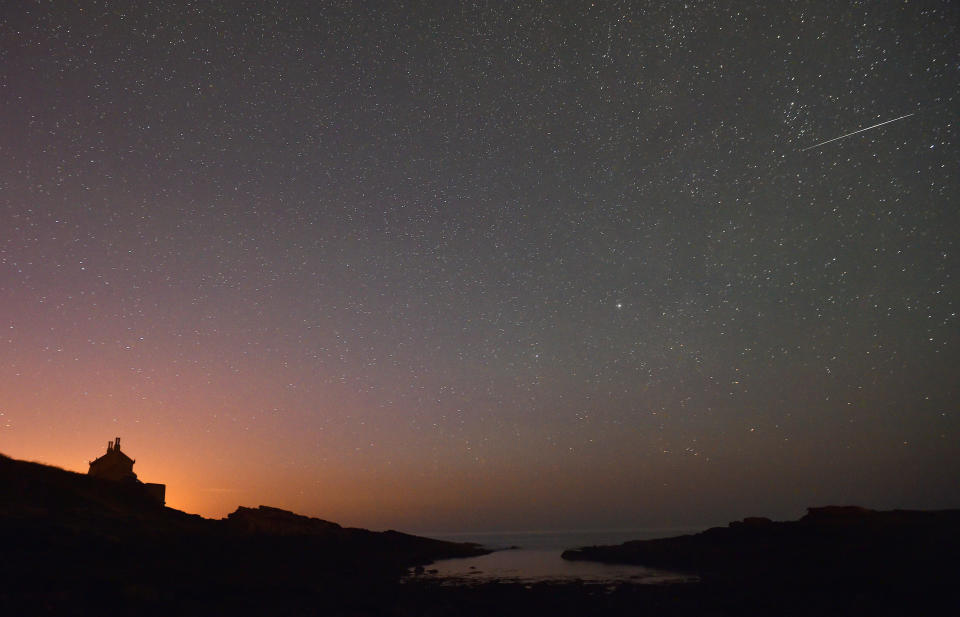Best time and place to catch tonight's Orionid meteor shower
Australian stargazers will want to get themselves to a remote spot and hope for clear skies on Tuesday as a spectacular meteor shower promises to light up the sky.
The Orionid meteor shower is set to peak, sprinkling the sky as old space rocks fly by. The spectacle is made up of celestial remnants left behind by Halley’s Comet burning up in the atmosphere, as Earth passes through the trail of space debris.
The meteor shower is named after the constellation Orion, the legendary hunter of Greek mythology, and is considered to be one of the most beautiful.
It takes place for roughly a month, from early October to early November, but is due to reach somewhat of a crescendo on Tuesday.
These trails left by Haley’s comet get pushed and pulled, especially by Jupiter’s gravity making them hard to forecast, but the Orionids are a fairly reliable meteor shower and typically produces about 10 to 20 meteors per hour.
However, some years can prove disappointingly faint.
Along with Eta Aquarids, which appears in the night sky in April/May, Orionids is the second meteor shower derived from the ice comet that circles our sun once every 76 years or so.
Halley’s Comet was last visible from Earth in 1986, and we’re not expected to see it again until around 2061.

Best time to watch the meteor shower
If you’re keen to catch a glimpse of the show, you’ll need to set your alarm for an early morning start.
Getting to a spot away from light pollution in metro and residential areas will improve visibility. Once there, look to the sky in the northeast and let your eyes adjust to the low-light conditions.
“In less than 30 minutes in the dark, your eyes will adapt and you will begin to see meteors. Be patient - the show will last until dawn, so you have plenty of time to catch a glimpse,” NASA says on its website.
The best time to see the meteor shower is about 4am to 5am, as the moon’s light begins waning and before the sun peaks out from over the horizon.
But you’ll have to keep your eye’s peeled as the Orionid meteors are known for their speed.
The debris zips into our atmosphere at more than 65 kilometres per second before vaporising in our planet’s upper atmosphere. The meteors themselves can be hard to see but the gas trails they leave behind can linger for several seconds, and even last up to minutes, NASA says.
And you won’t need a telescope or binoculars, as it’ll all be visible with the human eye.
Do you have a story tip? Email: newsroomau@yahoonews.com.
You can also follow us on Facebook and Twitter, download the Yahoo News app from the App Store or Google Play and stay up to date with the latest news with Yahoo’s daily newsletter. Sign up here.


